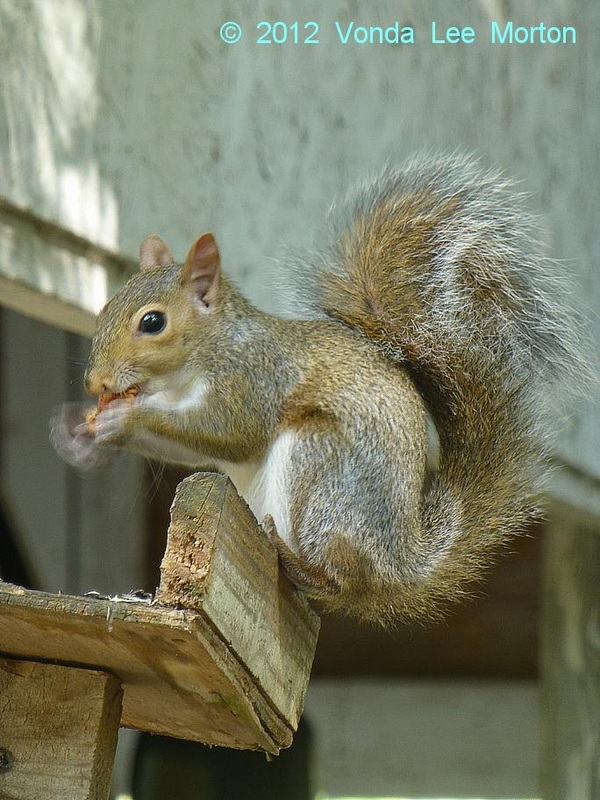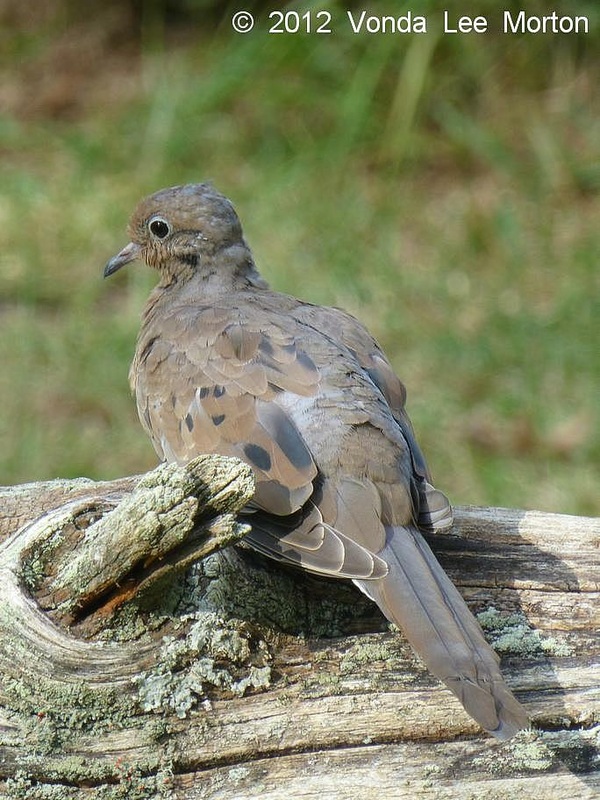The last of the gray squirrels is officially gone—he’s not coming around for handouts now, but I did catch him at one of the feeders last week and snapped a photo for your viewing pleasure.
|
I’ll be dropping back to two updates a month—around the first and the fifteenth—for the remainder of the year, unless I have an unusually heavy week of intakes or an especially interesting or rant-inducing intake. The last of the gray squirrels is officially gone—he’s not coming around for handouts now, but I did catch him at one of the feeders last week and snapped a photo for your viewing pleasure. The doves have been released; I still see the mourning doves on the fence every now and then, but the Eurasian collared dove has totally flown the coop, no pun intended. The flyers continue to grow and are becoming shyer and less willing to come out of their little nest to be fed; I’m putting the syringe at the opening and letting them pop their heads out to eat. And, of course, they’re getting a wider variety of solid foods each week, including the occasional pecan treat! The one intake for the past two weeks was a DOA juvenile peregrine falcon. The finder and the transporter both said the bird, who was unable to fly, was active and aggressive when captured and during the ride to me, but when I opened the box to examine it, it was dead. Apparently it had died fairly recently during the trip, as it was still warm and rigor hadn’t set in. A post-mortem exam showed no broken bones, no puncture wounds—not a feather out of place. Given that his beak was full of fresh, dark blood, my guess is that he was a victim of rodenticide poisoning and the thrashing the transporter heard in the box was the seizures of a dying bird. No necropsy will be performed, since rehabbers in Georgia do not have ready access to necropsies; the one university in the state that performs them charges both us and DNR for them. DNR has faced budget cuts in recent years, and as you all know by now, rehabbers pay our operating costs out of our own pockets and the few donations we receive in any given year. This means that too often we’re left making educated guesses as to the cause of death, but necropsies aren’t cheap, and those funds can be better put to use on saving other critters under our care. Sad to say, it comes down to a matter of priorities—do we spend the money on a necropsy to confirm our guess as to cause of death, or do we use that money on resources needed for our living intakes? I can’t help the dead; I can help the living. Yeah, I know that sounds harsh—welcome to the world of wildlife rehab.
6 Comments
Catherine aka Annieprunes
10/14/2012 04:19:26 pm
thank you for your continued commitment to the critters Vonda. You are right about your priorities - as tough as those decisions must be to make. Keep us posted...
Reply
Laurens Wildlife Rescue
10/15/2012 03:49:51 am
Thanks!
Reply
Judye Blackburn
10/15/2012 07:17:40 am
Vonda, I continue to marvel at your dedication to our wild life. It is very interesting to read the information you send and the great photos of various species.
Reply
Laurens Wildlife Rescue
10/15/2012 07:35:54 am
Thanks, Judye!
Reply
Ida Blanche Suskind
10/16/2012 01:54:10 am
The sometimes truly indiscriminate use of rat poisons is very upsetting to me!!!
Reply
Laurens Wildlife Rescue
10/16/2012 03:21:36 am
As with most human activities, people don't stop to think about the ripple effect of anything when they use poisons, fell trees, rake pine straw (destroying the ground cover many birds rely on for survival), clear-cut timber, throw up yet another subdivision or shopping center...Bottom line--most people just don't think, period, beyond the short-term, "what's in it for me" effects. More people need to start looking at the long-term effects of their activities and trying to mitigate the negative impact we have on the species that share this planet with us.
Reply
Your comment will be posted after it is approved.
Leave a Reply. |
Archives
April 2023
Categories
All
|










 RSS Feed
RSS Feed
